Did you know that some states are far more prone to dangerous blizzards than others? Blizzards can be very hazardous, and not only for humans and their pets. North American animals that hibernate are usually safe from storms, but those that don’t are at risk of injury or death in blizzard season. While blizzards can occur in any state, some are more often prone to dangerous blizzard conditions. Read on to learn about the 5 states with the most dangerous blizzards and their history of winter storm activity.
When is a Storm a Blizzard?
The National Weather Service uses specific criteria to determine when a storm qualifies as a blizzard. According to their guidelines, blizzards must have sustained or frequent winds of 35 miles per hour or more. In addition to fierce winds, blizzards also have falling or blowing snow that reduces visibility to less than a quarter-mile for three hours minimum. If these conditions are met, it results in dangerous, life-threatening situations.
Which States Have the Most Dangerous Blizzards
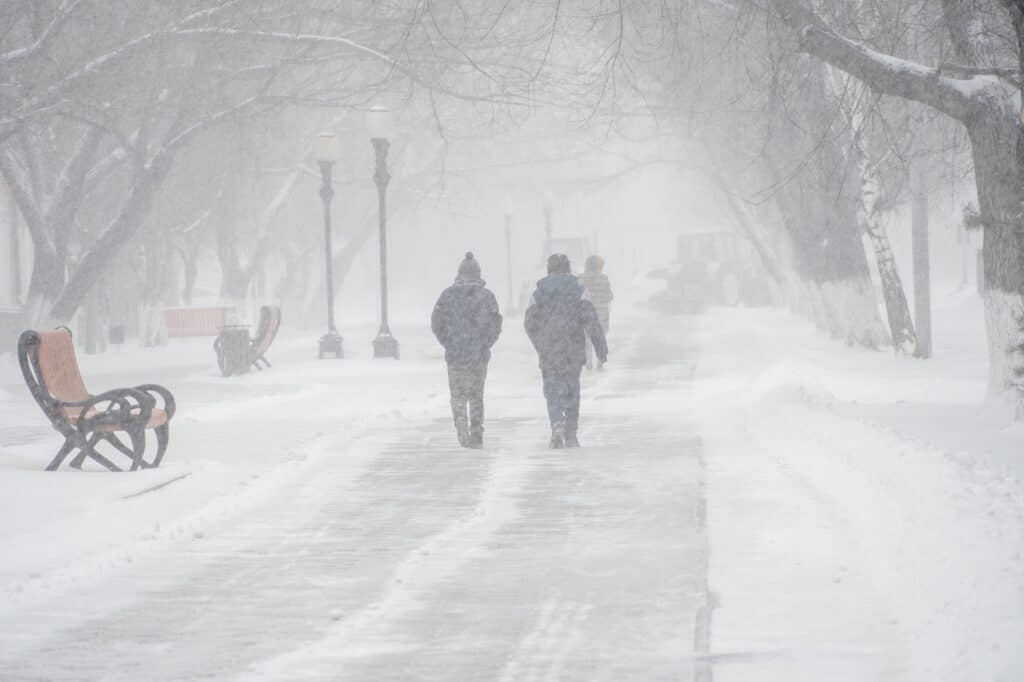
Maine, Nebraska, North Dakota, South Dakota and Vermont are some of the states with the most dangerous blizzards.
©Sambulov Yevgeniy/Shutterstock.com
Based on the deadliest winter storms in US history, the 5 states with the most dangerous blizzards are Maine, Nebraska, North Dakota, South Dakota and Vermont. These states frequently have massive snowstorms that paralyze entire regions.
The Most Dangerous Blizzards in Maine
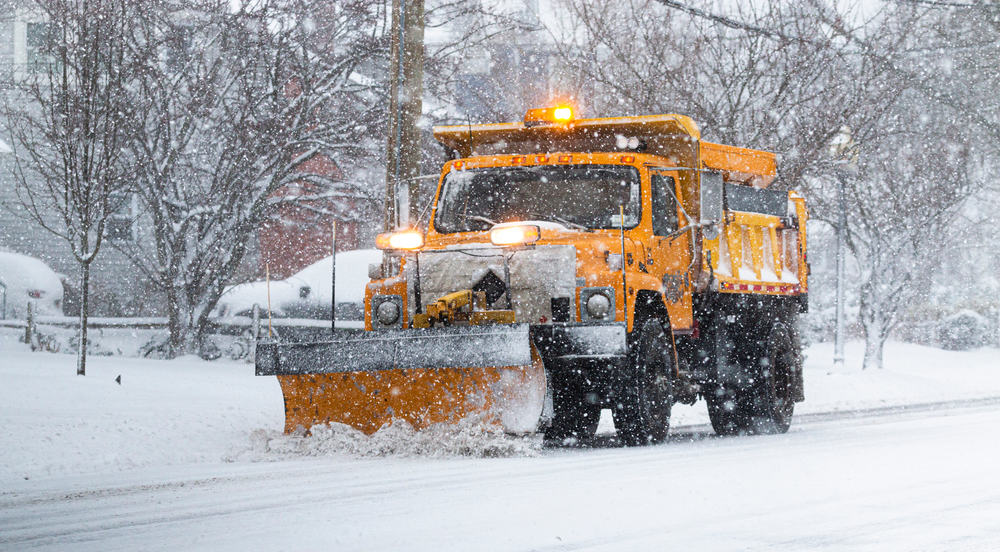
One of Maine’s notorious blizzards was known as the Great White Hurricane, it struck in 1888.
©WoodysPhotos/Shutterstock.com
Maine is no stranger to dangerous blizzards. One of the most notorious was the Great Blizzard of 1888, also known as the Great White Hurricane. This winter storm struck the east coast on March 11-14 of that year. It killed many people and animals in Maine.
The storm brought hurricane-force winds and up to 50 or more inches of snow to parts of Maine, New Hampshire, New Jersey, New York, Massachusetts, Rhode Island, and Connecticut. In total, more than 400 people were killed and over $20 million in damage was caused (in 1888 dollars).
While the Great Blizzard of 1888 was one of the deadliest blizzards in US history, it’s not the only dangerous blizzard to hit Maine. The state was also hit hard by the Blizzard of 1913, another massive winter storm that caused over $3 million in widespread damage. The storm struck in mid-February and brought over 30 inches of snow.
Maine blizzards frequently cause sustained winds, plus dangerous wind chills at very low temperatures every winter.
The Most Dangerous Blizzards in Nebraska
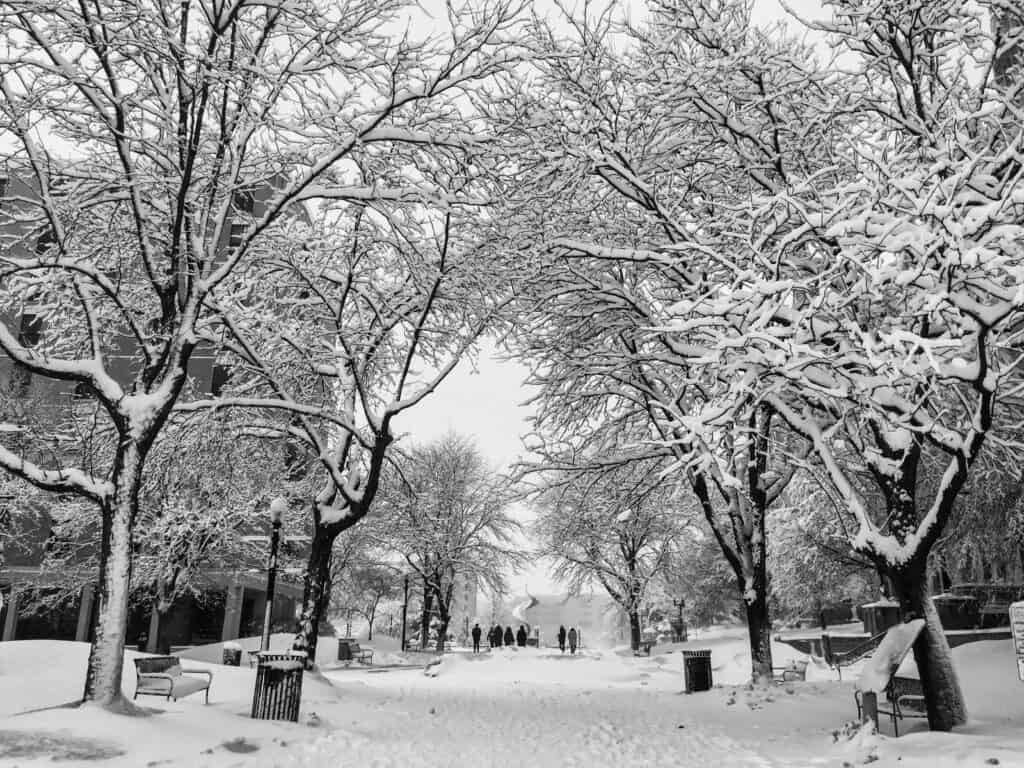
The Children’s Blizzard of 1888 was one of Nebraska’s deadliest in history.
©Nicholas Stankus/Shutterstock.com
The Children’s Blizzard (aka Schoolhouse Blizzard) of January 12, 1888, was one of Nebraska’s deadliest weather events. Though large snowfall was predicted, a warm spell early in the day caused many people to relax about the forecast. They went about their daily routine of work and chores and sent their children to school.
Then, a severe and fast-moving blizzard pummelled Nebraska and the Dakota Territory with deadly results by late afternoon. Over 250 adults and children lost their lives in The Children’s Blizzard of 1888 while trying to get home from work and school. The loss of livestock and other animals in Nebraska was devastating to the whole state. This great blizzard remains one of the deadliest weather events in Nebraska’s history.
The blizzard of February 15-16, 2003 was another deadly storm that struck Nebraska. The winds were not as severe as the 1888 blizzard, but they were still strong enough to create huge drifts of snow and deadly conditions. The cold temperatures and blowing snow made travel nearly impossible. Many people were stranded. More than 20 people died due to the snow storm, which spanned across the Midwest, Mid-Atlantic, and Northeastern states.
Nebraska and other Plains states experience an average of 1-2 blizzards every winter, sometimes more. Plenty of flatland with few trees, plus lighter snow consistency, make it easy for blizzards with bitterly cold temperatures and biting winds to form in these regions.
The Most Dangerous Blizzards in North Dakota
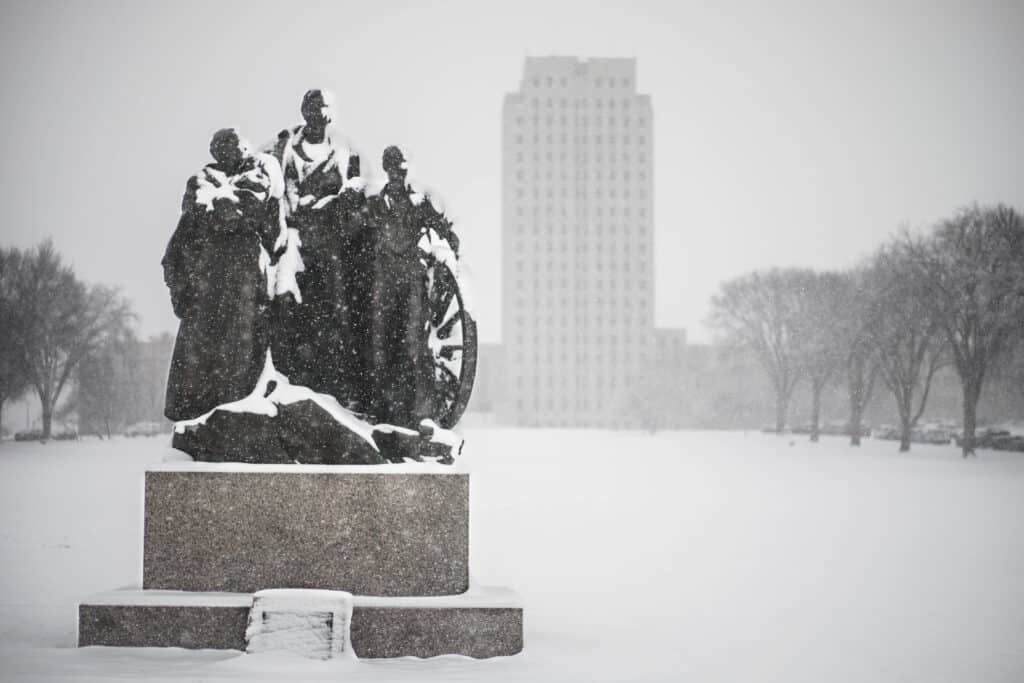
A photograph of the North Dakota State Capital in a blizzard.
©Phillip Schultz/Shutterstock.com
North Dakota is also famous for its brutal winters. Here are two of the most dangerous blizzards in North Dakota history:
The March 1920 blizzard in North Dakota was one of the most deadly on record. It killed 34 people and left hundreds more stranded without heat, food or water. The storm began on March 15th and lasted for four days, with raging blizzard winds reaching 80 miles per hour.
Another historic blizzard in North Dakota took place March 2-5 of 1966. Winds reached up to 70 mph, with nearly 40 inches of snowfall and 30-40 foot high drifts. At least 18 people died in this blizzard across North Dakota and the Great Plains states.
Though we’re pointing out severe blizzards in US history, it’s important to note that the 5 states with the most dangerous blizzards also regularly report deadly winter weather in the present day. For example, the North Dakota blizzard of April 12-14, 2022, caused 8-foot snow drifts and 60 mph winds.
North Dakota is another state that experiences very cold weather and some of the worst blizzards every winter.
The Most Dangerous Blizzards in South Dakota

Aerial View of Downtown Sioux Falls, South Dakota after a Winter Blizzard
©Jacob Boomsma/Shutterstock.com
By now we hope you agree that blizzards are no joke. High winds, low visibility, and frigid temperatures can be downright deadly. Unfortunately, residents of South Dakota know all too well the hazards and hardships that deadly blizzards bring. So let’s discover two of the most dangerous blizzards in South Dakota history.
The “Armistice Day Blizzard” of 1940 got its name because it struck on November 11th – Armistice Day. The blizzard raged across multiple Plains states, including South Dakota, Nebraska, and Iowa. But, like the Schoolhouse Blizzard of 1888, this storm took many people by surprise.
The day started off unusually warm, but a cold front swept through within hours, bringing strong winds and frigid temperatures. The swift change in weather was unexpected and caught hundreds of communities across South Dakota and the Midwest with their guard down. As a result, the Armistice Day Blizzard claimed the lives of over 150 people and hundreds more livestock. Deer and other wild animals in South Dakota died or struggled to stay warm in the winter cold. It was one of the deadliest blizzards in US history.
The 2009 North American Christmas Blizzard was a powerful and destructive blizzard that struck South Dakota the week of Christmas that year. The storm claimed 21 lives and caused at least 27 tornadoes across the Great Plains states. South Dakota got hit with strong winds and the most snowfall (just over 30 inches) of all the states affected by the blizzard.
South Dakota typically has multiple dangerous blizzards per year.
The Most Dangerous Blizzards in Vermont
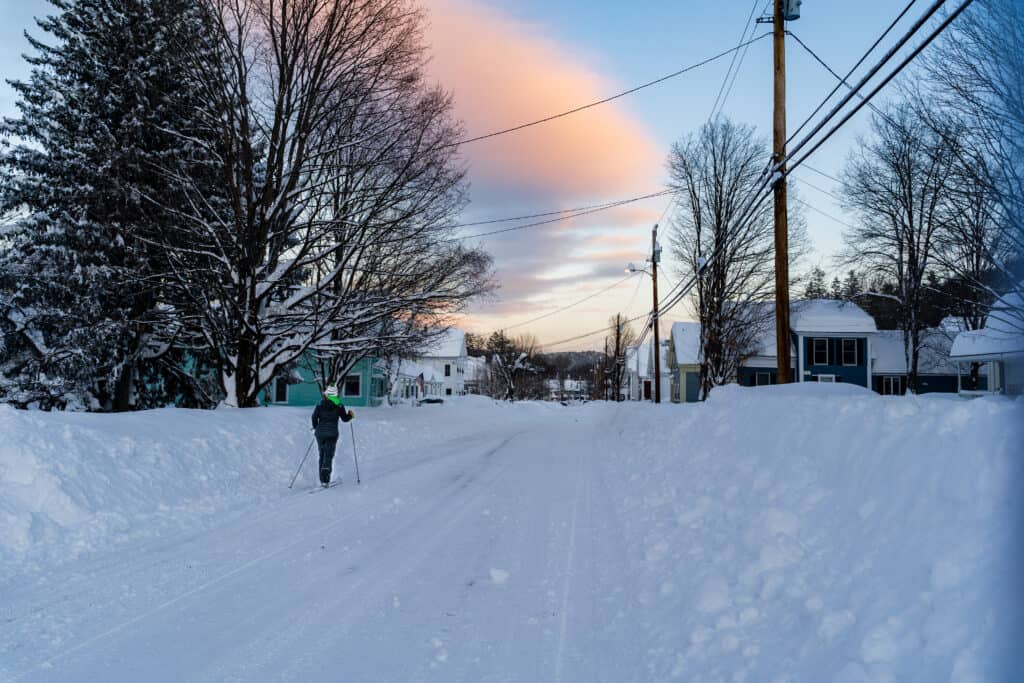
A woman cross country skies down a residential street after a blizzard in Vermont.
©J.A. Johnson/Shutterstock.com
In the US, Vermont has some of the worst luck from blizzard activity. Most regions of the state average about 8 feet of snow every winter, so their winters are already severe. But when the blizzards hit, life gets mighty treacherous in this state.
As with many other states across the US, the mid-March Great Blizzard of 1888 was one of the worst natural disasters to ever slam Vermont with dangerous weather. The speed of bitterly cold winds across the state reached over 60 mph in some areas. Snow drifts 10-12 feet deep, and 200 yards long stopped many Vermont freight trains for days. Hundreds of people died in the severe snowstorm, and many more were left stranded without food or shelter.
A 2-day blizzard on Valentine’s Day 2007 unleashed up to 30 inches of snow in Vermont, near Burlington. Over 25 inches of that snowfall happened in just one day.
Another historic dangerous blizzard roared through Vermont in January 2010. From January 1-3, in the Burlington area of Vermont, snow fell in record-breaking amounts — over 37 inches! At the time, it was the most snowfall ever noted in this region’s recorded history.
Vermont gets more snow per year than any other state. Every year there are several dangerous blizzards that cause damage and disruption.
If you’re planning on visiting Vermont during the winter, check the forecast and be prepared for some potentially dangerous weather.
Which Other States Have Dangerous Blizzards?
The 5 states listed here aren’t the only ones that suffer the wrath of deadly winter storms. Other Northeastern states like Massachusetts and New Hampshire are prone to blizzard conditions. Additional Midwest and Great Plains states like Kansas, Iowa, and Montana have dangerous blizzards. And the occasional blizzard surprises residents of southern states like Texas and Oklahoma now and then.
Predicting winter weather risks can be hit or miss. But history tells us that these states are always possible locations for the next storm of the century. Yes, the next severe winter storm or deadliest blizzard could be right around the corner. So zip up your parka, put a warm coat on your dog, and stay safe out there!
And use caution when traveling through scenic areas with gorgeous winter weather — like the top national parks to visit in December and January.
The photo featured at the top of this post is © iStock.com/NAILOTL
Thank you for reading! Have some feedback for us? Contact the AZ Animals editorial team.






